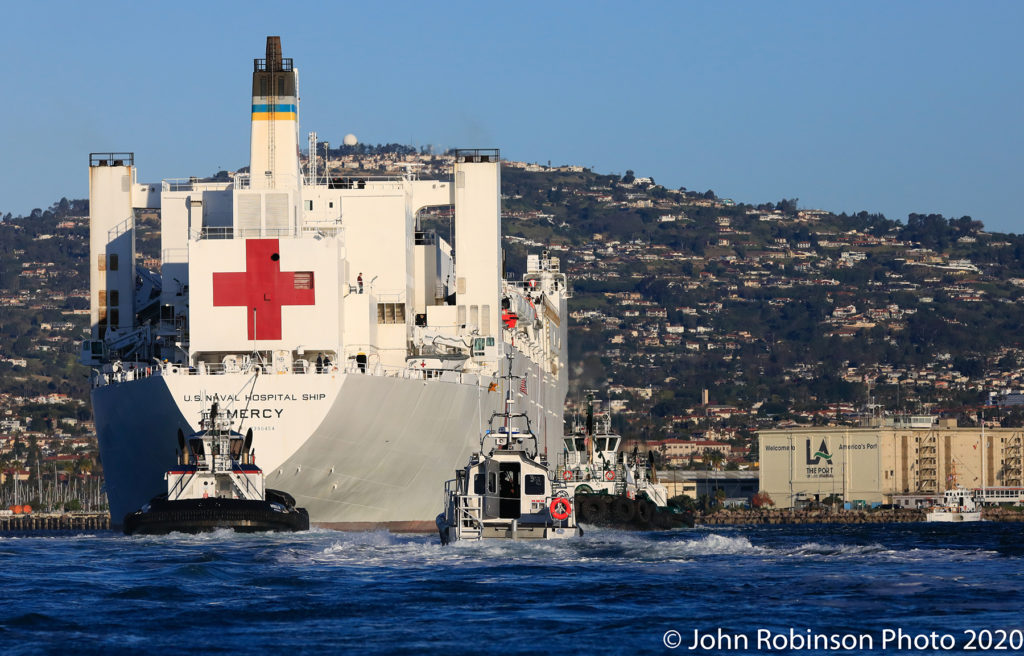
Just two months after the U.S. and China signed a trade deal aimed at reducing tensions that severely impacted business at the Port of Long Beach, the seaport once again finds itself in the throes of an externally-induced crisis.
Trade between the two countries had just begun to recover from the effects of a trade dispute, POLB Executive Director Mario Cordero said, when the coronavirus slowed down production in China, leading imports from that nation to dip once more.
In February, the port saw a 10% decrease in cargo volumes as a result of the growing epidemic, which would be declared a global pandemic on March 11. Preliminary numbers for March show a similar decrease in year-over-year cargo volume, compared to the same month in 2019.
Ports around the nation are recording losses in cargo volume, Cordero noted. “We’re doing fairly well, comparatively speaking,” he added. Long Beach’s neighbor, the Port of LA, experienced a 22% decrease in cargo volumes in February, compared to last year.
Both ports have seen a significant increase in canceled voyages, also referred to as “blank sailings”—ships that were scheduled to shuttle cargo between Asia and the San Pedro Bay ports, but never commenced their journey. In total, there were 60 blank sailings at the shared port complex, 19 that were destined for Long Beach and 41 that were supposed to arrive in LA.
Each blank sailing is the equivalent of $300,000 in lost revenue for the port, Cordero said.
Despite the cancellations, the port director said the supply chain has been stable and emergency supplies as well as personal protective equipment, such as face masks and gloves, have been prioritized.
“Considering the crisis that’s before us, I think we’re doing relatively well as an operation,” Cordero said.
The priority placed on personal protective equipment—marine terminal operators are moving such products through the supply chain more quickly—is part of the port’s greater goal to protect the health of workers at the port and beyond, Cordero said.
“We’re at a higher risk. This virus doesn’t have borders,” he noted. But, luckily, “in terms of the dockworkers that are on the front lines, we’ve had no incident.” While there have not been any reported cases of infections among workers at the Port of Long Beach, a longshore worker in Wilmington tested positive for the virus on April 1, according to a statement by the International Longshore and Warehouse Union.
The same workers who are braving the risk of infection every day to keep the port’s essential operations up and running, helped dock the USNS Mercy hospital ship last week.
“We are incredibly proud that our members were a part of welcoming USNS Mercy to Los Angeles and supporting our health care professionals while they care for the families of our local communities and all of Los Angeles County,” said Danny Miranda, president of ILWU Local 94.
The hospital ship is docked at the Port of LA, but will be serving VA hospitals in both Los Angeles and Long Beach. Cordero said he does not expect the ship’s presence to impact operations at the Port of Long Beach, and welcomes its arrival in a time of great need in the community.
In addition to the 1,000-bed hospital ship, there are a number of other unusual arrivals on the books for the San Pedro Bay port complex.
To address an issue of empty containers piling up at the port as a result of canceled voyages, the port has worked with shippers, primarily Swiss-based Mediterranean Shipping Company and Japan’s Ocean Network Express, to arrange container pickups.
The first such ship, a 19,000 TEU (twenty-foot equivalent unit) vessel, has already arrived in Long Beach, another 23,000 TEU vessel is scheduled to arrive soon. A vessel of that size, “that’s not one we [normally] see here in the San Pedro Bay complex,” said Cordero.
“The good news is that the carriers are mobilizing to send their larger vessels to address the issue of empty containers,” he said. “The more containers we get out and load back to Asia, that mitigates our capacity issues.”
And good news is in short supply these days. Despite the relative success of the port in mitigating disruption caused by the crisis, Cordero expressed concerns regarding the long-term economic impact.
Some of the cargo that was scheduled to arrive in Long Beach, but was delayed as the virus wreaked havoc in China, is likely to begin rolling in as the country begins to slowly recover. “After that surge, what does it look like?” Cordero wondered about the port’s future cargo intake.
In the U.S., the brunt of the outbreak seems far from over and companies have canceled supply orders as a result. “That has a domino effect on our economy. The concern is: Now, is this triggering a recession?” Cordero said.
One thing appears clear: The ripple effect of the global pandemic will make it difficult for the port to grow its cargo volume this year. “Right now, I can’t be too optimistic that we’ll end up with increased cargo numbers,” Cordero said.
